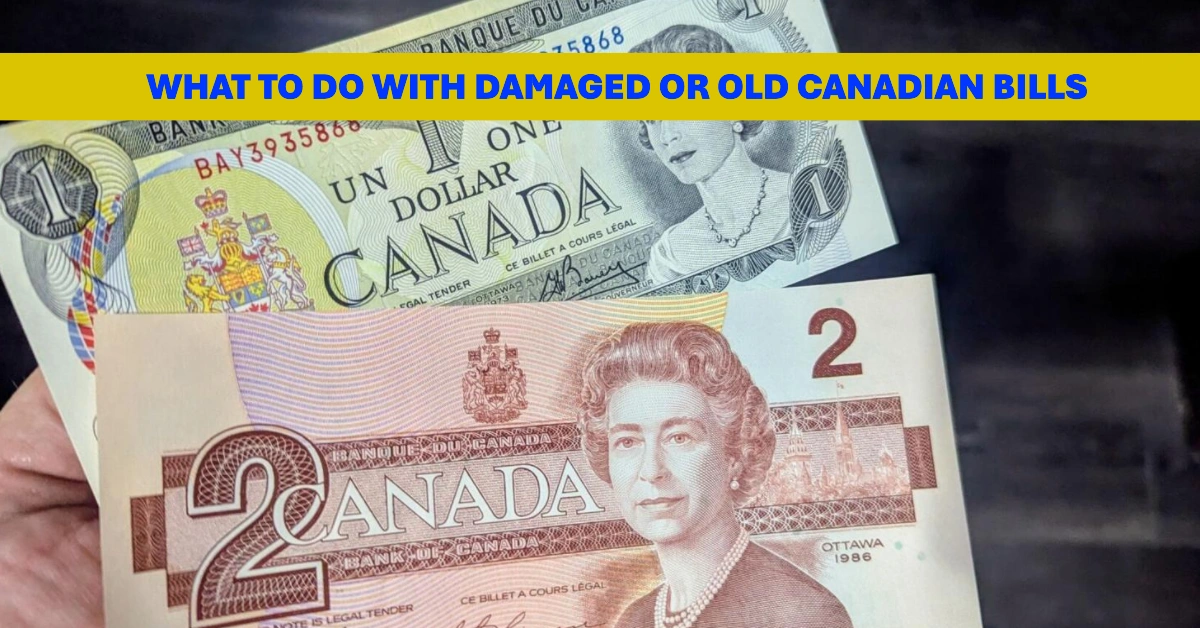If you’ve come across an older Canadian $5, $10, or $20 bill and aren’t sure if it’s still usable—or possibly valuable—you’re not alone. Many Canadians hold onto vintage currency, either by accident or with the hope that it might be worth more someday. But can you still spend it? And what if it’s damaged?
Let’s break it all down so you can decide what to do with your old bills.
Table of Contents
Are Old Canadian Banknotes Still Legal Tender?
According to a recent LinkedIn post by the Bank of Canada, most older Canadian bills can still be used to pay for goods and services—with a few exceptions.
In a public poll, 81% of nearly 2,600 respondents correctly answered that older notes are still valid, with the Bank clarifying:
“They can still be used except for $1, $2, $25, $500 or $1,000 denominations, which are no longer considered legal tender.”
So if you have a $5, $10, or $20 bill from previous decades, you’re still in luck. You can use them, deposit them, or exchange them at your financial institution.
What If Your Old Bill Is Damaged or Contaminated?
How the Bank of Canada Handles Damaged Bills
Not all old bills are in pristine condition. Fires, floods, or simply time can leave paper money in poor shape. In such cases, the Bank of Canada offers a banknote redemption service.
If your note is:
- Burnt or water-damaged
- Torn or missing pieces
- Extremely dirty or moldy
- Exposed to hazardous materials like blood or drugs
…it may be considered mutilated or contaminated and should be handled carefully.
Step-by-Step Guide to Redeem Damaged Canadian Currency
- Complete the Online Claim Form
Visit the Bank of Canada website and fill out their official claim form. - Package the Notes Safely
- Place the damaged bills in a clear, secure bag.
- If they’re fragile or falling apart, use bubble wrap.
- Do not touch fragments more than necessary.
- Prepare Your Envelope
- Include the form separately from the bagged bills.
- Mail everything to:
Bank of Canada – Bank Note Redemption Service
234 Wellington Street
Ottawa, ON
K1A 0G9
- Wait for Processing
- You’ll get a confirmation letter upon receipt.
- Claims are typically processed within 30–60 business days, although more complex cases can take longer.
What to Do With Non-Legal Tender Bills
As of January 1, 2021, the following Canadian notes are no longer legal tender:
- $1
- $2
- $25
- $500
- $1,000
Your Options:
- Exchange Them at Your Bank: Most financial institutions still accept them at face value.
- Submit to the Bank of Canada: You can also redeem them via the same mail-in process used for damaged notes.
- Keep Them: These notes may hold or increase in collector value.
Could Your Old Canadian Bill Be Worth More Than Face Value?
Rare Bills That Fetch Premium Prices
While most $1 or $2 bills aren’t going to make you rich, some could be worth more, especially if they:
- Are uncirculated
- Have unique serial numbers
- Feature rare signature combinations
For instance:
- The 1973 $1 bill and 1986 $2 bill were the last issued before coins replaced them.
- Though these were printed in large quantities, pristine copies can command small premiums.
Exceptionally Rare Notes: The $25 and $500 Bills
These two denominations, issued only in 1935, are highly sought after:
- $25 Note:
- Commemorated King George V’s Silver Jubilee
- Only 160,000 printed
- About 1,840 believed to remain in private hands
- A graded version is currently listed on eBay for over $8,800
- $500 Note:
- Featured Sir John A. Macdonald
- Extremely rare; one sold for $337,812.50 at a 2021 auction
How to Find Out What Your Bill Is Worth
If you suspect your old banknote might be a collector’s item:
- Check collector’s catalogues
- Consult two or three coin/money dealers
- Get an expert appraisal before selling
Final Thoughts: Don’t Toss That Old Bill Yet
Whether you’re holding onto a worn-out $10 note from the ’80s or a pristine $25 bill from 1935, it’s important to know your options. While some bills can still be used for everyday purchases, others may need to be redeemed—or carefully evaluated for collector value.

